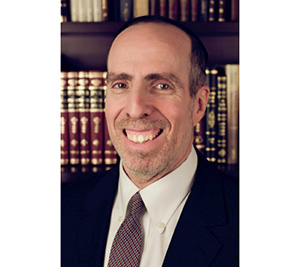
It is always intriguing to note the different choices for the hafatarah between Sephardim and Ashkenazim. A poignant example is the selection for Parshat Shemot. Sephardic Jews read Yirmiyahu Perek 1, the same haftarah read by all Jews the first Shabbat following Shiva Asar B’Tamuz. This represents the first of the t’lata d’puranuta, the three sad haftarot read bein hameitzarim, the sad time between Shiva Asar B’Tamuz and Tisha B’Av. Ashkenazic Jews, however, do not read Yirmiyahu Perek 1 for the haftarah for Parshat Shemot, despite the obvious mei’ein haparsha, parallel between the parsha and Yirmiyahu Perek 1.
In both Parshat Shemot and Yirmiyahu Perek 1 we find two great nevi’im, Moshe Rabbeinu and Yirmiyahu HaNavi, selected by Hashem to serve as messengers of prophetic messages to Am Yisrael. Both prophets, however, resist the choice to serve as navi but eventually relent. The obvious parallel seems to support the Sephardic choice.
Ashkenazic practice may be easily explained by noting the enormous difference between the respective missions to which Hashem assigned the two prophets. Moshe Rabbeinu was assigned to serve as the navi of the liberation of Am Yisrael from Mitzrayim. Yirmiyahu, on the other hand, is chosen to serve as the navi of the impending churban (destruction) of the Beit Hamikdash. Thus, Ashkenazic tradition regards Yirmiyahu Perek 1 as the perfect haftarah for the first of the t’lata d’puranuta but not for Parshat Shemot.
Ashkenazi practice might also emerge from the fundamental difference between the nevua of Moshe Rabbeinu and any other navi. Indeed, Hashem in Bamidbar Perek 12 spells out to none other than Aharon and Miriam that Moshe Rabbeinu is in a class of his own and never to be compared to any other navi. In fact, the Rambam in his 13 principles of faith devotes one principle to belief in prophecy and a distinct article of faith to believe in the unique nevua of Moshe Rabbeinu. This might also demotivate the Ashkenazic tradition from drawing a parallel between Moshe Rabbeinu and Yirmiyahu HaNavi.
A closer examination of the haftarah clarifies the Sephardic practice. Pasuk 10 of Yirmiyahu Perek 1 states that Yirmiyahu was “set over the nations and over the kingdoms, to root out and to pull down, and to destroy and to overthrow; to build and to plant” (this translation and all subsequent ones are from www.mechonmamre.org). In other words, Yirmiyahu’s mission is not only to inform Am Yisrael of the impending churban but also to ready us for the subsequent rebuilding—“to build and to plant.”
In fact, Yirmiyahu is the navi who informs us v’shavu vanim lig’vulam, the children will return to their borders (31:16). Yirmiyahu in this perek is the one who presents the gripping scene of Rachel mevaka al baneha, mother Rachel crying for her children, refusing to be consoled, and Hashem finally calming her with His promise that her children will return home. It is Yirmiyahu haNavi who in Perek 29 informs us that we will enjoy an opportunity to return 70 years after the Babylonian exile about which is sung in Ma’oz Tzur, “l’keitz shivim noshati, at the conclusion of 70 years I was saved.”
Moreover, the closing of the haftarah with the start of Yirmiyahu Perek 2 reassures us that even in the exile the relationship between Hashem and Am Yisrael prevails. The beautiful words include “kodesh Yisrael laHashem, the Jewish people are holy to Hashem,” and “zacharti lach chesed ne’urayich ahavat keluloyatayich lechtaych acharai bamidbar b’eretz lo zeru’ah, I remember for thee the affection of thy youth, the love of thine espousals; how thou wentest after Me in the wilderness, in a land that was not sown.”
Thus, we see that there indeed is a proper parallel between Moshe Rabbeinu’s mission and that of Yirmiyahu. In fact, drawing this parallel reminds us that just as Moshe Rabbeinu serves as the harbinger of redemption, so too does Yirmiyahu play this role. Highlighting this parallel reminds us that just as Yirmiyahu’s prophecy of doom has been fulfilled, so too his prophecy of eventual redemption will also be fulfilled.
Indeed, I heard Rav Yosef Dov Soloveitchik note that the brachot for the haftarah clearly indicate that the primary purpose of the haftarah is to reinforce our belief in the eventual redemption of our people. In fact, the Sephardic practice to proclaim “Go’aleinu Hashem Tzevakot shemo, kedosh Yisrael, Hashem the Holy One of Israel is our Redeemer,” at the conclusion of every haftarah matches this idea perfectly. Thus, Sephardic Jews proudly connect the hakdasha (dedication) of Moshe Rabbeinu and Yirmiyahu HaNavi as prophets as the combination reaffirms the future redemption of Am Yisrael. Thus, Sephardic Jews believe that Moshe Rabbeinu and Yirmiyahu HaNavi are perfect together.
By Rabbi Haim Jachter
Rabbi Haim Jachter is the spiritual leader of Congregation Shaarei Orah, the Sephardic Congregation of Teaneck. He also serves as a rebbe at Torah Academy of Bergen County and a dayan on the Beth Din of Elizabeth.








